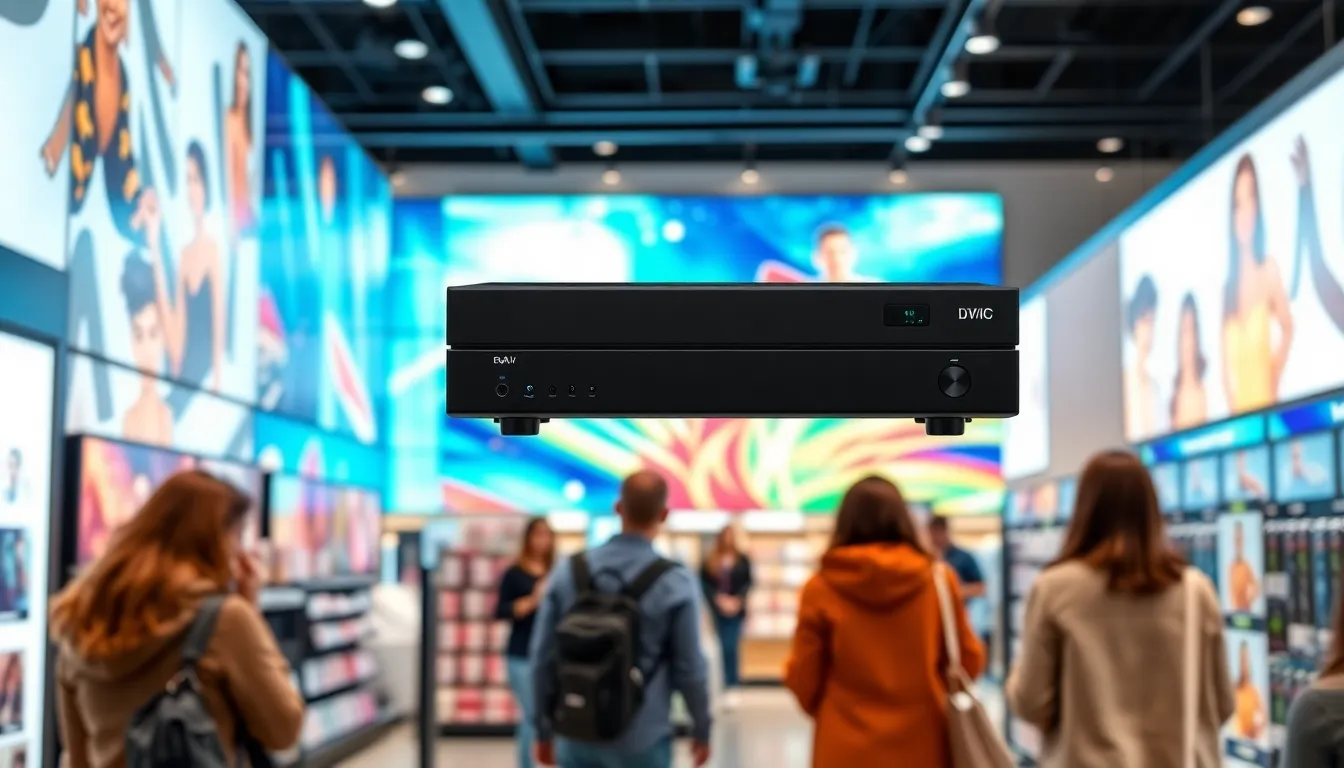In today’s fast-paced world, standing out is more crucial than ever, and that’s where digital signage media players come into play. Imagine turning a plain wall into a vibrant canvas that captures attention and delivers messages like a pro. These devices aren’t just tech gadgets; they’re your secret weapon for engaging customers and boosting brand visibility.
Whether it’s a bustling retail store or a corporate office, digital signage media players transform ordinary spaces into extraordinary experiences. They’re like the life of the party, showcasing dynamic content that keeps audiences glued to the screen. With endless customization options and easy management, investing in a digital signage media player is a no-brainer. So why settle for boring when you can dazzle? Let’s dive into the world of digital signage and discover how these players can revolutionize communication and elevate your brand.
Digital Signage Media Player
A digital signage media player is a device that displays multimedia content on digital screens. Businesses use these players to manage and showcase dynamic content ranging from advertisements to information boards. Various industries, including retail and healthcare, rely on digital signage for effective communication.
Typically, each player connects to a screen and retrieves content from a cloud-based server or local storage. Playback of videos, images, and notifications occurs seamlessly, ensuring high-quality visual output. Connectivity options usually include Wi-Fi, Ethernet, or HDMI depending on the specific model.
Hardware specifications often influence performance. Some media players come equipped with advanced processors and graphics capabilities, allowing for smooth playback of high-resolution content. Others provide additional features like touch screen functionality and compatibility with various content formats.
Software integration enhances usability. Many media players support various digital signage software, facilitating content scheduling and updating. Users can modify displayed content remotely, making them an efficient solution for maintaining relevance in fast-paced environments.
A digital signage media player serves as a vital link between content creation and viewer engagement. By showcasing visually appealing and customized messages, these devices contribute significantly to brand visibility and customer interaction. Their role in transforming spaces and enhancing communication cannot be understated, making them essential for modern businesses.
Benefits Of Using A Digital Signage Media Player


Digital signage media players offer significant advantages for businesses. They enhance communication and interaction, making them vital in many environments.
Enhanced Visual Communication
Digital signage media players improve visual communication through high-quality displays. They allow businesses to present vibrant images, videos, and animations. Utilizing digital signage ensures messages capture attention effectively. Businesses can customize content easily to align with brand identity. High-definition displays create engaging environments, from retail stores to corporate offices. Customizable templates enable quick updates without the need for technical skills.
Improved Audience Engagement
Engaging an audience becomes simpler with digital signage. Interactive content, such as quizzes or touch-screen options, invites customers to participate. Real-time updates keep content relevant, maintaining viewer interest. Businesses can track engagement metrics to refine strategies effectively. Personalized messages cater to specific demographics, enhancing connection with the audience. Surveys and feedback options encourage customer interaction, fostering loyalty.
Types Of Digital Signage Media Players
Digital signage media players fall into two primary categories: hardware-based players and software-based players. Each type offers distinct advantages for different business needs.
Hardware-Based Players
Hardware-based players serve as dedicated devices designed specifically for digital signage applications. These players typically include built-in components optimized for content playback, ensuring reliability and performance. They often support various formats, such as HD and 4K video, enhancing viewing experiences. Many businesses prefer these players for their simplicity and ease of installation. In retail environments, hardware-based players efficiently manage multiple screens simultaneously, delivering consistent content across locations. Specific models include small form factor PCs and media boxes equipped with robust graphics capabilities.
Software-Based Players
Software-based players utilize installed applications running on general-purpose hardware, allowing greater flexibility and customization. These players support various operating systems, enabling deployments on existing devices such as tablets and laptops. A major advantage is the ability to update content remotely and in real-time, which helps maintain fresh messaging. Businesses often choose software-based solutions for their scalability and adaptability. Integration with other software systems, such as content management systems, further streamlines operations. Overall, software-based players provide an efficient way to manage extensive digital signage networks.
Key Features To Look For
When selecting a digital signage media player, important features significantly impact performance and usability. Businesses benefit from considering several key aspects.
Compatibility
Ensure the media player works seamlessly with various display types. Compatibility with both HD and 4K video formats remains crucial for maintaining high-quality visuals. Additionally, check support for different file formats, which includes JPEG, MP4, and PNG. It’s vital for the chosen player to integrate smoothly with existing hardware, including televisions and projectors, without requiring extensive modifications. A wide range of supported operating systems enhances flexibility, allowing for easier adoption across various setups.
Content Management
Content management capabilities greatly determine the effectiveness of digital signage media players. Users should look for intuitive software that simplifies content scheduling and updates. The ability to manage content remotely proves valuable, especially for businesses with multiple locations. Real-time updates facilitate timely and relevant messaging, improving audience engagement. Additionally, advanced features such as templates and drag-and-drop functionality streamline the creation process. Analytics tools that track viewer engagement metrics provide insights that help businesses refine communication strategies.
Conclusion
Digital signage media players are vital assets for businesses aiming to enhance engagement and visibility. By transforming static displays into dynamic visual experiences, these devices foster stronger connections with audiences. Their ability to deliver real-time updates and interactive content ensures that messages remain relevant and captivating.
With options ranging from hardware-based to software-based players, organizations can choose solutions that best fit their needs. The right digital signage media player not only improves communication but also provides valuable insights through engagement metrics. As businesses continue to innovate, embracing digital signage will undoubtedly play a crucial role in shaping effective marketing strategies and enriching customer experiences.
